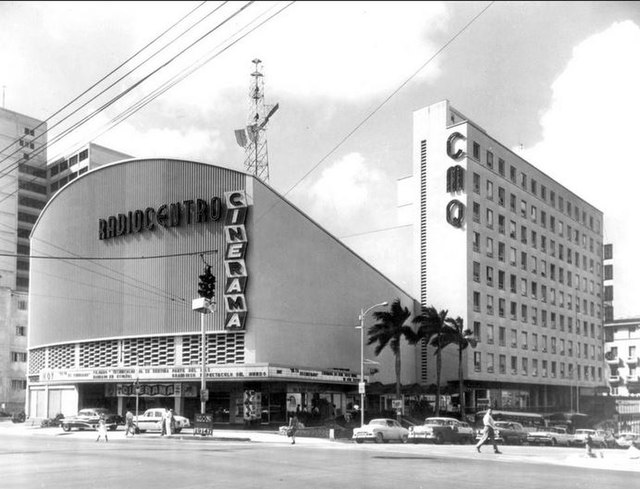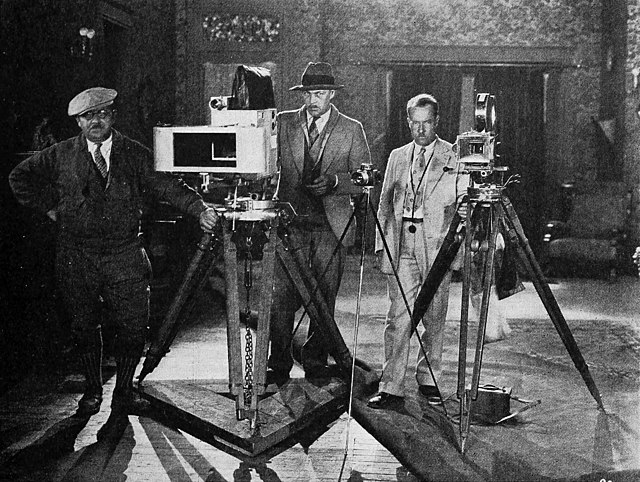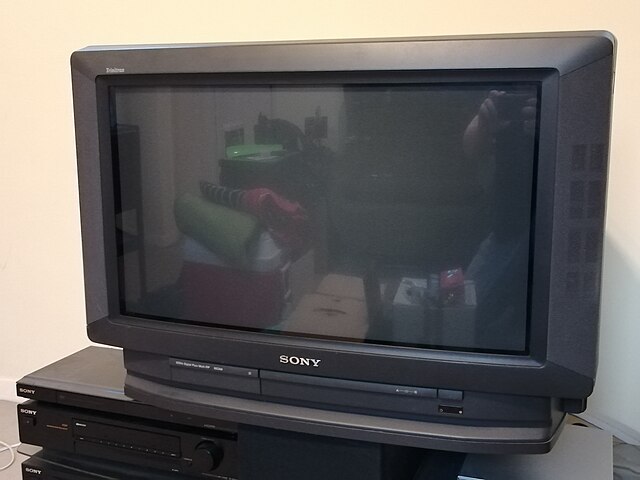Cinerama is a widescreen process that originally projected images simultaneously from three synchronized 35mm projectors onto a huge, deeply curved screen, subtending 146-degrees of arc. Subtending refers to the pathways of the projected images from the synchronized projectors onto the curved screen overlapping each other at one point. The trademarked process was marketed by the Cinerama corporation. It was the first of several novel processes introduced during the 1950s when the movie industry was reacting to competition from television. Cinerama was presented to the public as a theatrical event, with reserved seating and printed programs, and audience members often dressed in their best attire for the evening.
Scene from This Is Cinerama
A Cinerama screen in the Bellevue, Amsterdam
Radiocentro CMQ Building, Havana, Cuba
The Cinerama dome in Los Angeles
Widescreen images are displayed within a set of aspect ratios used in film, television and computer screens. In film, a widescreen film is any film image with a width-to-height aspect ratio greater than 4:3 (1.33:1).
Widescreen in a control room
Conrad Luperti, J. Marvin Spoor, and William S. Adams with the Natural Vision camera
An early (1994) Sony Widescreen Television







